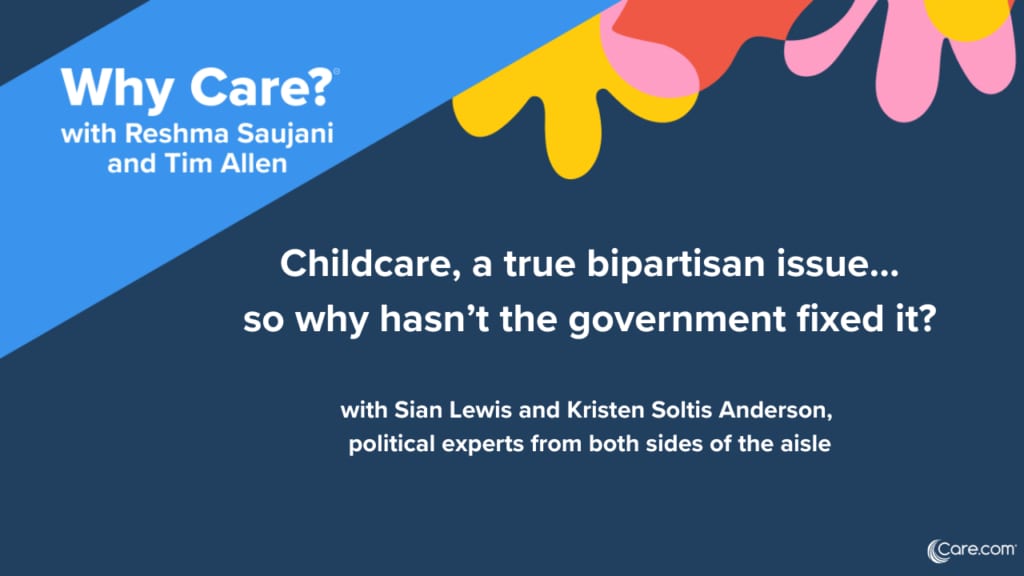
Working parents and businesses nationwide are about to face another uphill battle in the ongoing child care crisis. On September 30th, 2023 a $24 billion federal emergency child care relief fund passed under the American Rescue Plan Act to prevent child care center closures during the pandemic, will expire. This loss of federal funding, referred to as the “child care cliff” is expected to shut down more than 70,000 child care programs nationwide—resulting in the loss of 3.2+ million child care spots for children.
How the Child Care Cliff Will Impact Working Parents
Millions of working families nationwide will be impacted from falling off the “child care cliff.” No state in the U.S. will be spared from child care closings due to the lack of federal funding. This means parents of the 3.2 million children who are projected to lose their child care spots will be forced to find alternative child care arrangements so they can work. Yet this is already a herculean task for families today due to cost and availability.
The 2023 Cost of Care Report, explores the increased costs of child care for the 10th consecutive year. Put simply, it is unaffordable for the majority of U.S. families who spend an average of 27% of their household income on child care–nearly 4 times higher than what the Department of Health and Human Services deems as affordable, which is less than or equal to 7% of a family’s income.
- Equally alarming, child care is harder than ever for families to find. 51% of families live in a child care desert–an area where there are either no caregivers or more than three times as many children aged 5 or under as licensed child care slots
- 3 in 4 parents say there are less than half a dozen daycare centers close to their home
- For families lucky enough to have access to a daycare center where they live, nearly two-thirds (63%) report that they have been put on a waitlist for a daycare center–and half are on multiple waitlists. Forty-nine percent had to wait more than three months, and of rural parents, 25% waited over a year.
This will only get worse with the impending child care cliff. According to Care’s 2023 Child Care Cliff Survey, parents anticipate the impact will include:
- Children being denied care (55%).
- Fewer spots available for new children (50%).
- Fewer resources for children (48%).
- Daycare layoffs or staffing changes (47%).
- Rising daycare rates (40%).
- Complete closures (36%).
Further, more than two-thirds (67%) of parents say it will take at least a month to put new child care in place. And, 51% of parents say it’s likely they will ultimately have to quit their job to be home with their children. In fact, parents are projected to lose nearly $9 billion in earnings annually from reducing their hours or leaving their jobs due to a lack of child care.
How the Child Care Cliff Will Impact Businesses
More than 50 million people in the workforce have a child under the age of 14 and nearly 70 percent of mothers with children under age 6 are employed. The millions of parents who lose their regular child care spots from lack of federal funding will find themselves scrambling to find alternative child care arrangements, which will likely disrupt their ability to stay focused, present, and productive at work. This means costly productivity losses for employers. Even before the looming child care cliff, employers report $3 billion in lost productivity a year from employee absenteeism due to child care breakdowns. Now, it will only get worse unless employers act.
Many employees may reduce their hours or quit their jobs altogether to take care of their children, resulting in even more productivity losses–and high costs of attrition for employers. In recent years, nearly 20% of working parents had to leave work or reduce their work hours solely due to a lack of child care. With turnover costing businesses approximately 33% of an employee’s base pay, or an average cost of $15,00 per employee, employers cannot afford to lose these valued employees.
How Employers Can Help Prevent Productivity Losses from the Child Care Cliff
American families cannot navigate the child care crisis alone. While policy makers continue to advocate for changes, employers must take action to support working families–and their company’s bottom line. Fortunately, many employers are already taking important first steps. According to the 2023 Future of Benefits report, 95% of employers are recalibrating their benefits packages this year–and nearly half (46%) are prioritizing child care benefits as a way to improve productivity and retention. Supporting working caregivers means providing accessible, affordable and scalable solutions that support parents at every life stage. Here’s how to get started:
- Survey employees to understand the most pressing needs of working parents and use results to influence and inform your benefits strategies.
- Design a flexible caregiving benefits program for your workforce. Employer-sponsored caregiving benefits (example) are critical to helping working parents stay in the workforce.
- Build a community for your working parents: Employee Resource Groups and mentor programs help your working parents build relationships and supportive connections in your workforce. In addition to benefits, they learn from and support one another throughout parenthood.
- Advocate for Care: The child care crisis is not going away on its own and businesses can play a huge role in lobbying for more affordable and accessible care for working families. Be informed and understand the role the government plays in child care. Companies like Moms First provide clear and actionable steps that individuals can take to connect with their representatives to advocate for change.
Mitigating Business Fallout with Employer-Sponsored Child Care Benefits
By helping employees find reliable child care so they can get to work, employers not only save their working parents time, money, and stress, but they also save their company money through decreased absenteeism, increased productivity and lower turnover. Care for Business clients report caregiving benefits contribute to::
- 30% decrease in employee absences
- 34% increase in productivity
- 29% increase in their recruitment
- 21% decrease in employee turnover
Employees also reap the benefits. 59% of employees report that family care benefits are the most important benefit they value–and 70% say Care benefits make them more likely to stay with their employer. While employers can’t prevent the child care cliff from happening, they can go a long way in supporting working parents with child care needs, and helping to reduce costly losses attributed to employee absenteeism, lost productivity, and turnover.
Helpful Resources
- The Century Foundation: Report on the Child Care Cliff
- Forbes: At The Edge Of The Cliff: Why Business Leaders Need To Care About The Expiring Federally Funded Childcare Act
- Parents.com: The Child Care Cliff Is a Problem American Families Can’t Fix Alone
- The Hill: Congress Must Act Now to Prevent America’s Working Families from Falling off the Child Care Cliff

